Raising the barn on equine veterinary care
With an outdoor arena and client observation areas, this new equine hospital is a dream for patients and clients.
This veterinary team wanted to make their patients feel right at home in their new clinic. But that's easier said than done when your patients weigh 1,500 pounds. (Yep, they were going to need a bigger barn.)
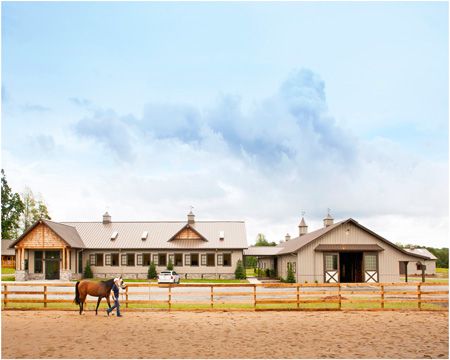
Tryon Equine Hospital sits on 16 acres of land right off a major road, near the border of North and South Carolina. "The site is in a picturesque and peaceful location among rolling hills and farms in the North Carolina foothills," the team said. | Photo courtesy of Tim Murphy, Foto Imagery LTD
In the end, Tryon Equine Hospital in Columbus, North Carolina, along with Heather Lewis AIA, NCARB, of Animal Arts, designed a 16,413-square-foot hospital built for, well, a horse. And their efforts landed them a Merit Award in the 2016 Veterinary Economics Hospital Design Competition.
Take home these tips from this equine team to help make your large-animal hospital a huge success.
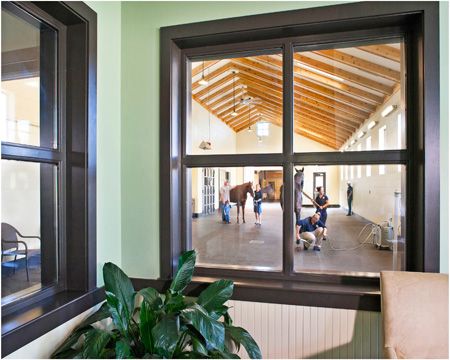
Nestled inside the exam/treatment area is a convenient client alcove so that horse owners can safely watch exams and evaluations. This space connects back to the reception area, which also has a viewing window. | Photo courtesy of Tim Murphy, Foto Imagery LTD
Treat all patients like winners
Tryon staff is made up of board-certified surgeons, certified acupuncturists, chiropractors, experienced ambulatory veterinarians and a board-certified internist. The team as a whole specializes in treating performance horses. However, they perform the same high-quality veterinary care on all of their patients.
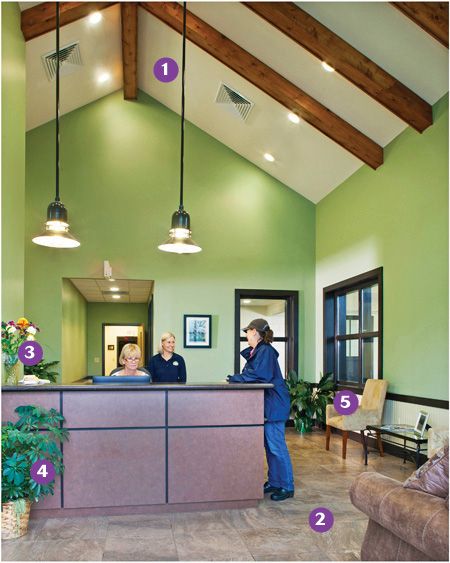
The high vaulted ceilings (1) in the clinic's reception area pay homage to the local architecture of North Carolina and give this small space an open, airy feel. Porcelain tile flooring is strategically grouted with a mocha color for longevity and stain resistance (2). Fresh flowers (3) and greenery (4) make the space come to life, while cushy chair options (5) invite clients to get comfortable while they wait. | Photo courtesy of Tim Murphy, Foto Imagery LTD
However, one of the team's top reasons for building the new facility was also to allow better care and more space for clients as well. The new site includes a consultation room, a client observation point and a conference room for private meetings-these are all features that the old clinic was lacking.
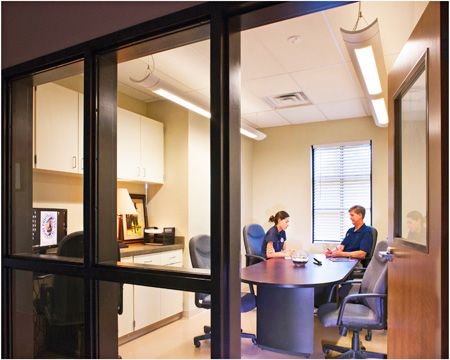
The new site includes a staff office that doubles as a client consultation room, with multiple workstations and plenty of storage in the form of cubbies, cabinets and drawers. | Photo courtesy of Tim Murphy, Foto Imagery LTD
“We realize that our patients are valued almost like children by their owners and clients like to understand what's happening with their horse, often wanting to be involved in every step of the diagnosis and treatment process,” says one of the three owners, Dr. Anne Baskett.
Get in the zone
Spaces for examining and treating large patients need boundaries in the circulation and floor plan to keep all horses and people safe. For example, at Tryon Equine Hospital, there is a human zone that horses never cross and an equine zone dedicated to patient treatment and surgery. These zones never intersect.
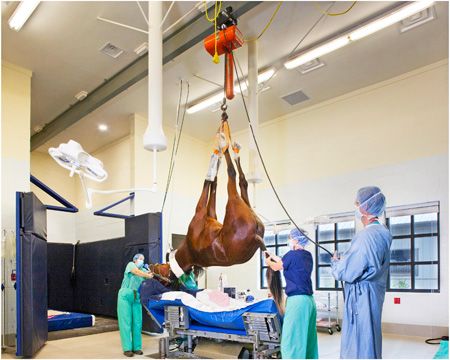
Both induction and recovery rooms are designed for the ultimate safety of horses and staff. They are carefully sized, padded and outfitted with view ports, hooks, easy access doors and squeeze gates to keep technicians safe from horses that are lying down or getting to their feet. | Photo courtesy of Tim Murphy, Foto Imagery LTD
“In an equine hospital, it's critical to provide this clear distinction because horses are huge,” according to Tryon's Hospital Design Competition entry.
There is a similar separation between staff members and clients. Clients are welcome in the reception area, exam and evaluation areas, and the medical barn.
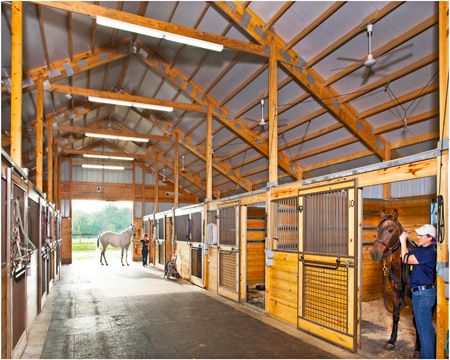
Tryon has a 16-stall medical barn for healthy outpatients as well as non-contagious medical and surgery cases. This barn can be independently accessed for easy accessibility. It's also separated from the busy traffic flow of the hospital. | Photo courtesy of Tim Murphy, Foto Imagery LTD
“Otherwise, circulation is restricted unless the client is specifically escorted by a staff member,” according to the entry. “The plan clearly divides public and private spaces.”
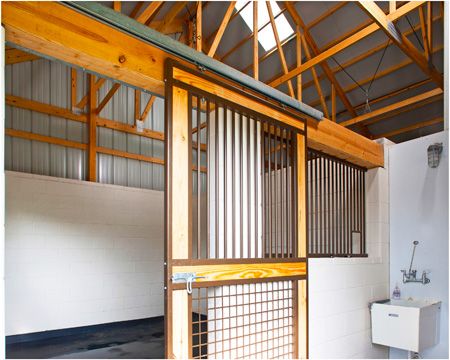
It was important for this full-service equine hospital to be able to isolate potentially contagious diseases. That's where the isolation barn comes into play. It completely separates patients from each other and the main hospital. Individual prep and cleaning areas allow for proper protocols and for staff to care for patients without leaving this isolation zone. | Photo courtesy of Tim Murphy, Foto Imagery LTD
Choose the right site
Tryon Equine Hospital is located among rolling hills and farms-sounds dreamy, right? While it is picturesque, there's no such thing as a “perfect” site. (The team encountered septic tank and power system issues right off the bat.) This is why it's ideal to involve a veterinary architect in the site selection process to make sure any major problems are within your budget.
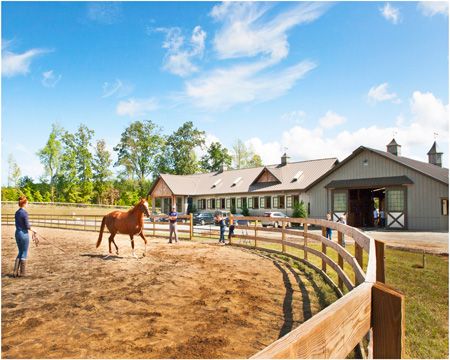
Want to make horse patients happy? Add an outdoor arena to your new hospital site map. Tryon's large performance arena is located in front of the hospital entrance and is the perfect place for patients to exercise their way back to good health. It also serves as a location for conducting initial evaluations for lameness cases and pre-purchase exams. | Photo courtesy of Tim Murphy, Foto Imagery LTD
And, when choosing the site, don't forget to plan ahead. Tryon sits on 16 acres, and the owners think that will provide for today's needs as well as future growth.
For a full photo tour of this hospital, click here.
Ashley Griffin is a freelance writer based in Kansas City and a former content specialist for dvm360.








